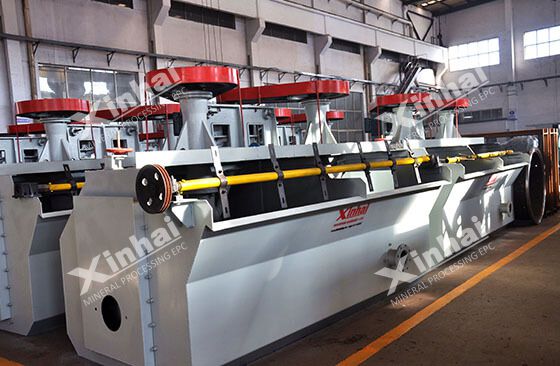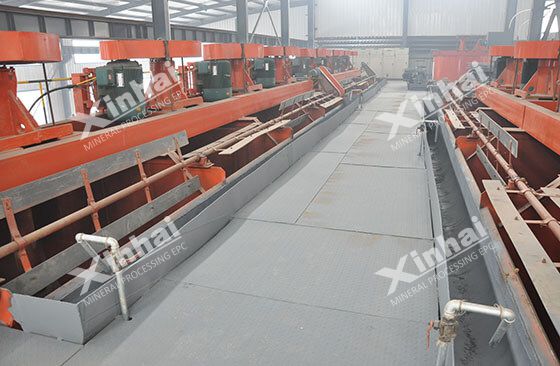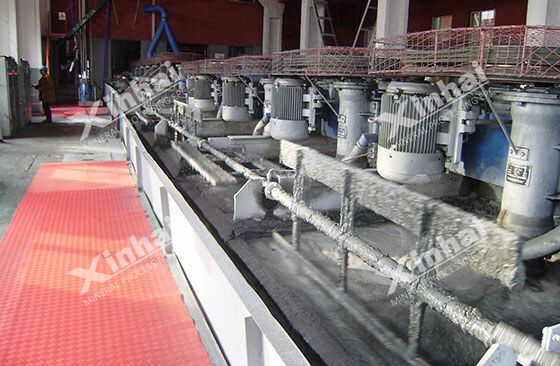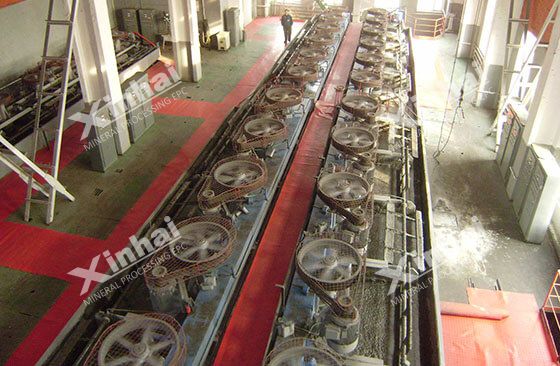
Skarn-type tungsten ore accounts for 40% of the domestic proven reserves. Its ore body is lenticular, layer-like, and complex in shape. Common minerals in the ore include scheelite, wolframite, cassiterite, molybdenite, and chalcopyrite, galena, sphalerite, siderite, arsenopyrite, pyrrhotite, magnetite and fluorite, etc., vary greatly in grades of ore from different deposits, and there is a large gap in scale. The flotation recovery of skarn-type tungsten ore often has problems such as difficulty in recovery and separation and poor recovery effect. This article will discuss the four major factors affecting the recovery of skarn-type tungsten ore and teach you how to solve the problem of skarn-type tungsten flotation.

PH value is an important factor affecting the flotation of skarn tungsten ore, especially when there are many associated calcium-containing minerals. Common associated calcium-containing minerals include fluorite, calcite, etc. These minerals are often recovered together with tungsten ore when fatty acid collectors are used, causing separation difficulties.
In response to this problem, caustic soda, lime, and sodium carbonate can be used as regulators to adjust the pulp to an appropriate pH value, and water glass as an inhibitor can reduce the recovery of fluorite and calcite in the concentrate. The pH value is 10 ~11 is suitable, of which sodium carbonate as a pH adjuster has a better effect.

In the flotation of skarn-type tungsten ores, water glass is often used as the main inhibitor to inhibit calcium-containing minerals in skarn-type tungsten ores. The modulus and dosage of water glass have a relatively strong inhibitory effect on calcium-containing minerals. Big impact.
Generally, the modulus of sodium silicate is low, and its inhibitory effect on gangue minerals is weak. As the modulus of sodium silicate increases, the inhibition capacity increases accordingly. Depending on the content of calcium-containing gangue minerals in different deposits, the modulus of sodium silicate is also different . From the perspective of dosage, insufficient amount of water glass will cause incomplete desorption of gangue mineral surface collectors such as fluorite and calcite, which will affect the sorting effect. If the amount is too large, the recovery of tungsten minerals will also be inhibited. In actual production, the modulus and dosage of the water glass inhibitor should be determined through targeted flotation tests.

Since there are many associated minerals in the selected ore, and some of them are close to the flotation properties of tungsten ore, the type and amount of suitable collectors are particularly critical.
Oxidized paraffin soap is a traditional skarn-type tungsten ore collector. It has good selectivity to tungsten minerals, but its collecting power is weak. Oleic acid has a good ability to collect tungsten minerals, but at the same time it can also cause the rise of calcium-containing gangue minerals. In order to obtain qualified products, a combination of oxidized paraffin soap, oleic acid, fatty acid sodium salt and other collectors is often selected in the selection of collectors to ensure the recovery effect while avoiding the rise of associated minerals. The dosage should be determined according to the deposit The composition is determined by experimentation.

Before the beneficiation operation, the process of selectively desorbing the surface collector of gangue minerals is the process of adding inhibitors for slurry mixing. In this stage, the mixing time, mixing speed and slurry concentration will all have an impact on the beneficiation effect .
If the stirring time is short, the collector will not completely desorb the collector on the surface of the gangue minerals, and the formation of flocs will be imperfect, which will result in low recovery rate and grade, and the recovery effect of fine-grained tungsten minerals is not good, and the mixing time is too long. Long will cause the collector on the surface of the tungsten mineral to be desorbed, which will also lead to a decrease in recovery. The stirring speed mainly affects the formation of flocs in the slurry and the recovery of fine-grained tungsten minerals in the slurry. The concentration of agitated slurry mainly affects the binding ability of flotation reagents and minerals. Generally, when the slurry concentration is within a certain range, the binding ability of reagents and minerals reaches the peak. Due to the differences in the properties of different deposits, these three factors must be determined by flotation tests to determine specific parameters.

Above we have introduced the four factors that affect the flotation of skarn tungsten ore. In actual production, there are big differences between deposits and different recovery conditions. The beneficiation test should be carried out according to the composition and characteristics of the deposit. Comprehensive recycling is carried out under conditions to avoid economic losses and waste of resources.
To find out more about our products and solutions, please fill out the form below and one of our experts will get back to you shortly.